Planet Earth is home to such an eclectic amalgam of creatures.
Now, thanks to the internet, we are able to find and obsess over all sorts of adorable, exotic animals from the comfort of our own homes.
And recently, the internet has developed a new obsession with the cutest, fuzziest little creatures living in Latin America’s lowland rain forests. They may look like tiny piglets, but they are actually an incredible breed of bat!
Spotting any rare animal typically incites wonder and amazement. Whether those animals are rare albino elephants just trying to make their way in the herd, or a breed of animal that sports a different look we've never seen before, these nuances can broaden our understanding of what amazing creatures exist out there.
These new cuties, though, are more than just delightfully sweet-looking — they are also very resourceful.
Scroll through below for more about these little fuzzy creatures, who will undoubtedly nuzzle their way right into your heart.
[H/T : The Dodo]
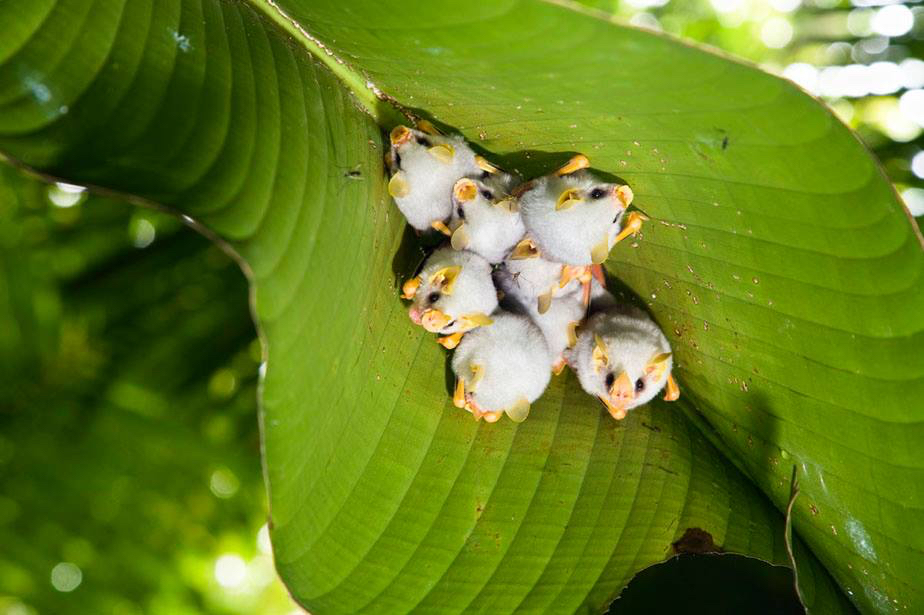
Watch out, teacup piglets — the Honduran white bat is quickly becoming one of the most adorable animals to sweep the internet.
These tiny, fluffy little creatures resemble mini pigs, but are actually bats, and are native to the rain forests of Honduras, Nicaragua, Panama, and Costa Rica.
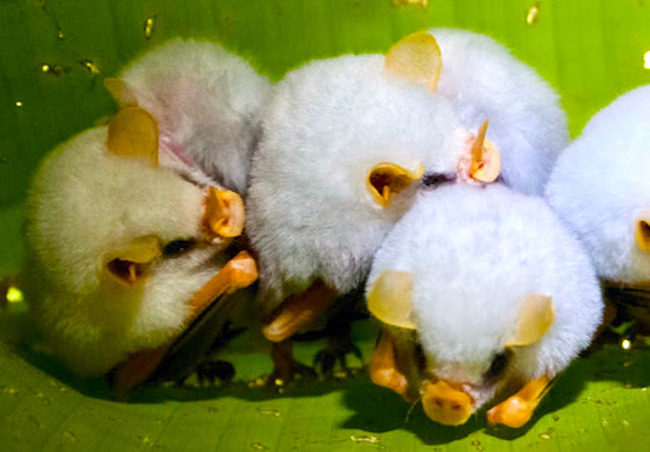
These little cuties are very small. During their lifetime, the most they end up weighing is 0.2 ounces, and they will only grow to around 1 to 2 inches long.
Honduran white bats have a pearly-white coat and sport a thin black membrane around their skulls, which scientists believe may act as natural SPF, protecting them from the sun’s harsh rays.

Unlike other cave-dwelling bats, Honduran white bats seek shelter under leaves of the heliconia plant.
Resourceful little bats that they are, these cuties slice small slits into the heliconia’s leaves, forming little tents. The bats then hang in groupings underneath, safely shielding themselves from the elements and hungry predators.
While most other bat species flee immediately in response to any sudden environmental disturbances, Honduran white bats typically stay put under their little leafy tents.
This behavior is likely due to the fact that their white coats reflect the green hue of their leafy tents, effectively camouflaging them from predatory threats.
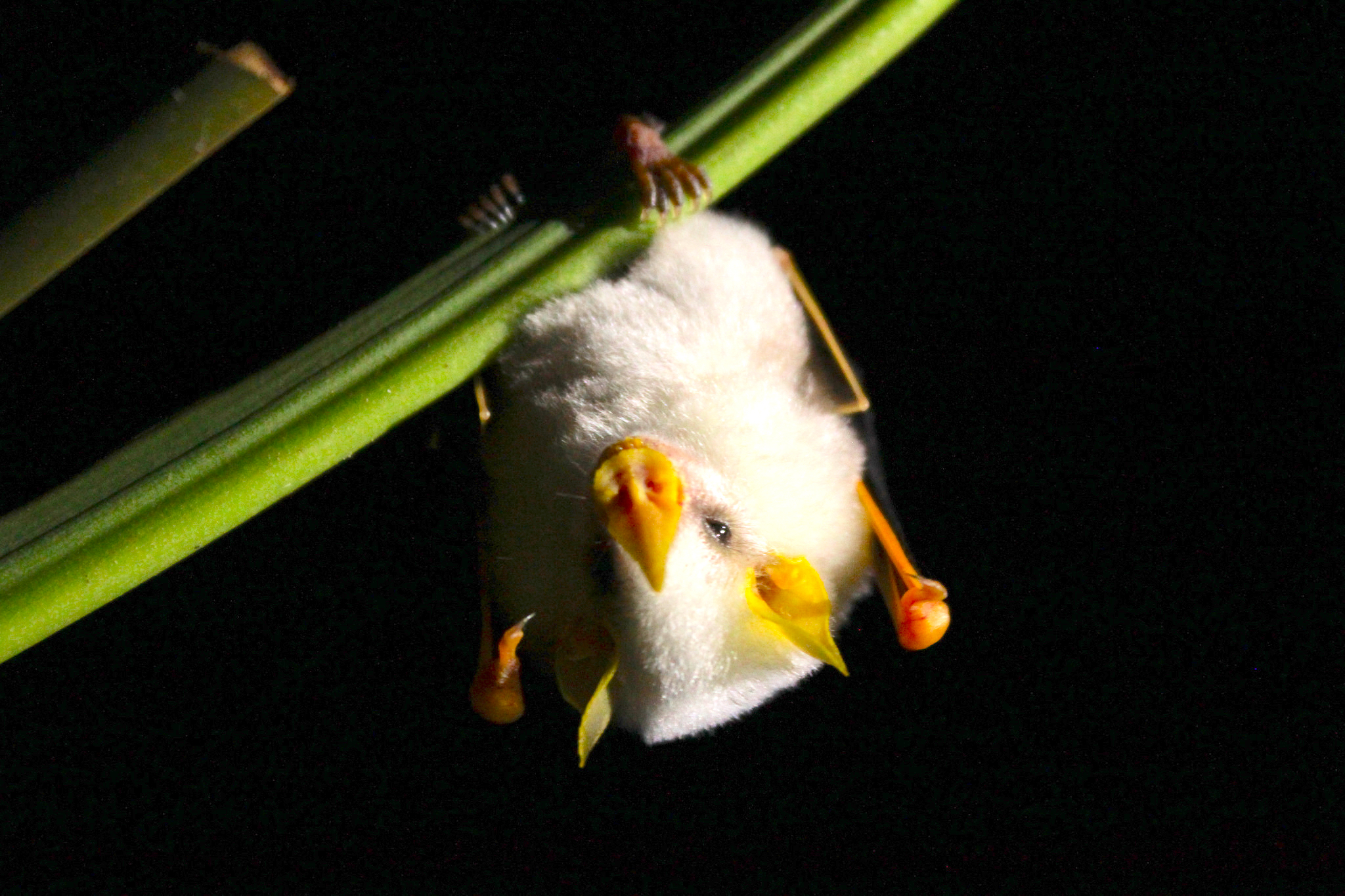
Honduran white bats do not call each of their many tents home for long, though. These bats are free-wandering nomads that rarely set up their camps in the same location for more than one day at a time.
Each leaf tent typically houses around half a dozen to a dozen bats at once. The demographics of those groupings are typically one male and a gaggle of females.
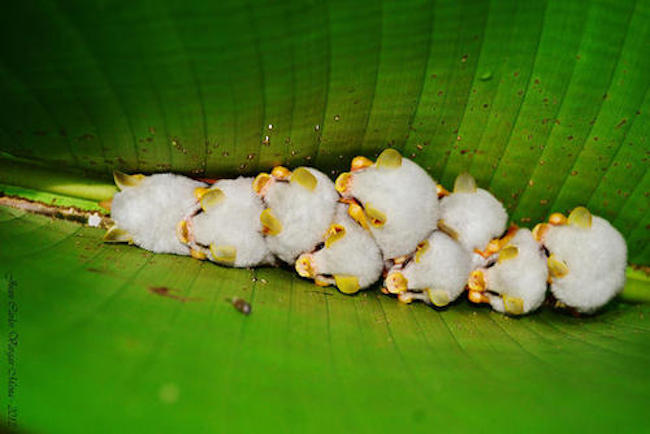
Honduran white bats mostly dwell in Latin American lowland rain forests, and are very dependent on the heliconia plant for survival.
As long as the heliconia plants remain present, these little bats will keep thriving. However, further rain forest destruction does threaten these cuties’ future survival.

At present, these little snowy-white bats are categorized as a near-threatened species.
The IUCN will likely reevaluate Honduran white bats soon to determine whether or not they have crossed over into the endangered species category and, thus, require further protection.
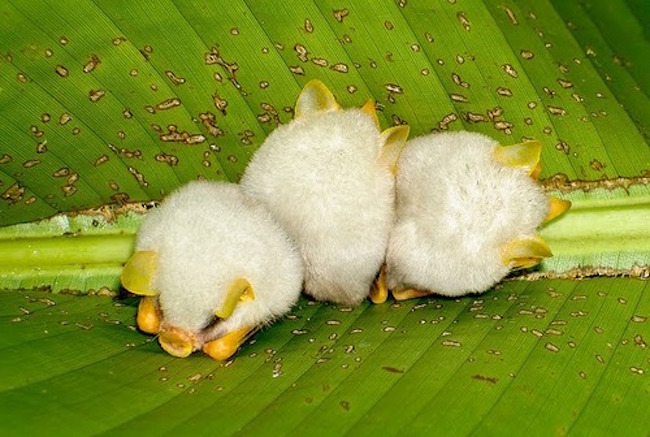
While these little Honduran white bats' cute physique alone certainly captivates our attention, knowing the intricate details regarding how they survive makes them all the more fascinating.
What do you think of these little bats? Let us know in the comments.
Please SHARE these incredible creatures with animal lovers everywhere!




